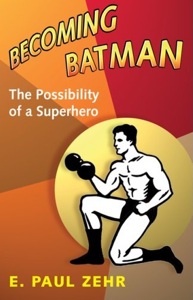
Happy New Year! It's that wonderful time of year when fitness becomes a mainstream movement, exercise is discussed around the office water cooler, and folks remember that they're entitled to the joy of moving and being fit and healthy.
If you’re starting out, the best investment you can make is in quality education and motivation. It’s not always as clear-cut and fun as shopping for equipment and deciding what color you want to paint the gym walls, but laying your foundation will determine everything about your fitness life.
Spend some time actively figuring out what you want from your efforts. I say “actively” because this isn’t the part where you sit across the desk from a Bally’s sales rep and describe where your flabby spots are. You need outside stimulus to figure things out. So get out of the house and go to as many different kinds of sample classes, gyms and studios as you can. Drop in on seminars. Grab personal trainers, athletes and the person who looks like he or she is fulfilled and having fun and ask them what they do and why they do it. This is your shopping.
Don’t linger long enough for sales associates to talk you into anything. Avoid anyone selling anything at all costs. You want to hear from the real people who are walking the walk, and the experts legitimately talking the talk. Surf the Net, but not for long – it makes you sit still and too often gives little return on time and energy. Use it later, after you’ve begun to figure out what you might be interested in. Then you’ll know just what you’re looking for, and that’s the kind of search the Net is set up for.
Scouting a gym to join
Use an active approach to scout out a gym, too. Most gyms will let you try them out for free on a trail membership, but the real cost is they will subject you to a sales pitch. If you’re strong enough to weather it, go for it, but if you’d like to be low on the radar, ask to buy a punch card or a temporary pass instead. Don’t advertise that you’re shopping around, but rather, be the person who is in the area for a short while and needs to work out. Each place has its own philosophy and atmosphere, and choosing which one is a good fit for you is a big decision. You may simply fall in love with the adventure of exploring different gyms, like me.
Setting up your home gym
If you are setting up a personal work out space, how exciting! You can invest in exactly what you need, equipment made for your body and your goals. You won’t have to conform to the gym’s hours or wait for equipment, and the germs will be the ones you bring in. The music will always be stuff you like, and no one will know if you’re half-dressed or worse. Here’s what I have bought and spent over the years - and I'm frugal.
While everyone’s goals are different in setting up a work out space, there is a basic set-up that can serve everyone well, from a teenager to an octogenarian. The main things you want to do with your body are push, pull, lift and get your heart pumping.
If you want to work out most efficiently for your health, strength and looks, get out of Dick’s and Joe’s equipment sales floor. Steer clear of machines like the ones in the gym – Nautilus and Universal. Shut off the Bowflex infomercial. Steer clear of fad fitness gadgets. Go to the heart of it and build a “real” studio, stocked with the classic basics that you can spend the rest of your life growing into and exploring. Invest in the following list of perennials and the education to use them.
- Squat rack, squat stands, or power rack/cage (spacesaver = squat stands).
- Pull-up bar or Pull-up tower (spacesaver = doorway bar).
- Freeweights – Options include dumbbells, kettlebells, and/or an Olympic-style bar with plates, and more homegrown alternatives like cans of food or paint, or homemade sandbags (spacesaver = sandbags - infinitely adjustable).
- Flat bench (it’s almost impossible to find an actual flat bench residentially; you’ll most likely get an adjustable incline/decline/flat bench).
- If you like to do cardio on a machine, pick one you already use and like.
- Punching bag – a heavybag on a stand, or hung from a rafter. There are exceptional, foundational benefits you can gain from even modest bag work.
This is most basic formula for a solid, fully-functional studio. Beyond this basic studio, figuring out what else you want depends on what you’ll be doing. Each discipline has its own list of required gear. Developing your studio will depend on your educational search and journey.
Related: How to build your own weightlifting platform


















 Coming in October -- A book by E. Paul Zehr --
Coming in October -- A book by E. Paul Zehr -- 




































